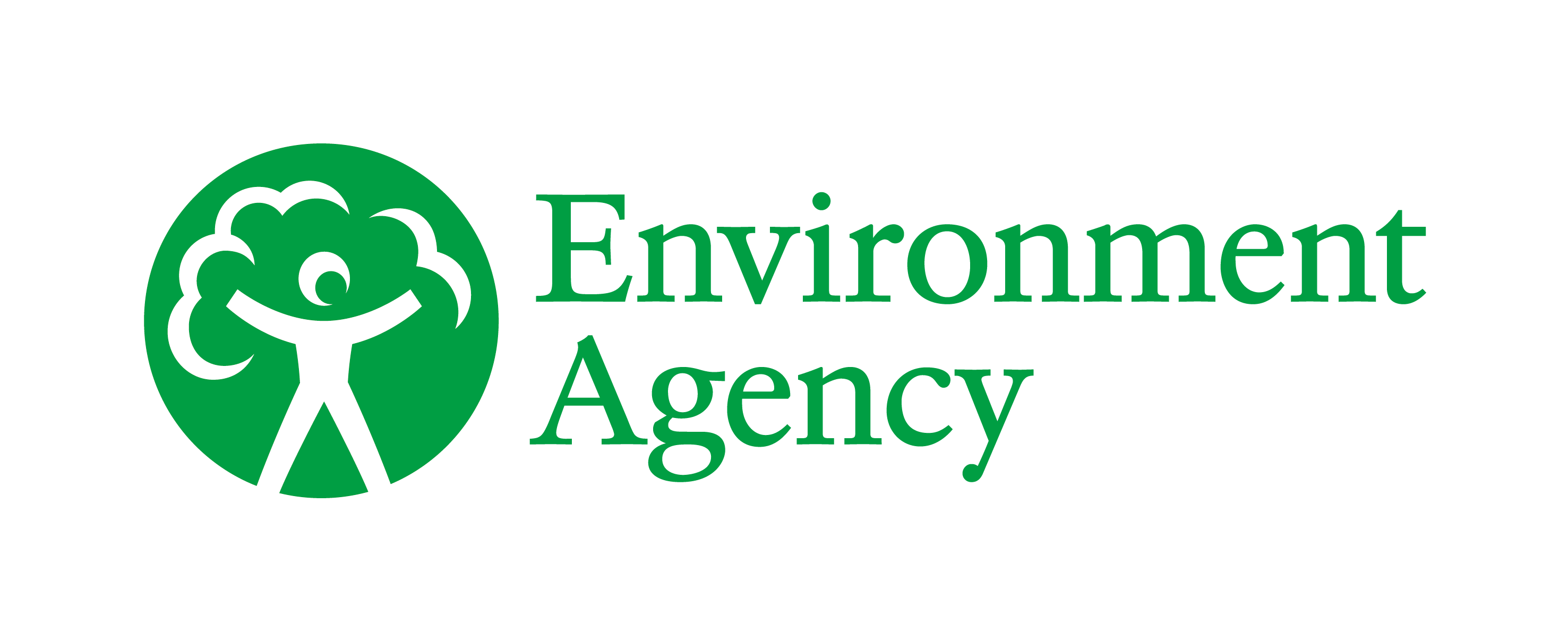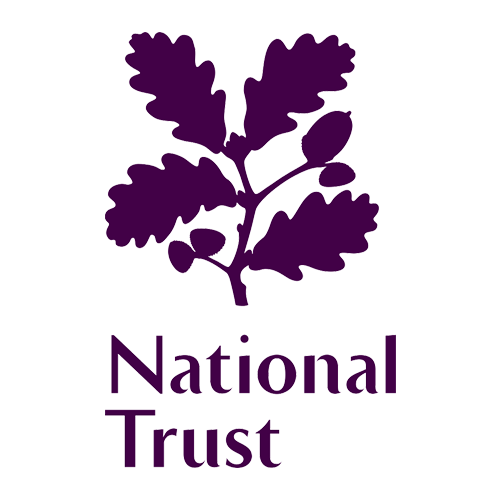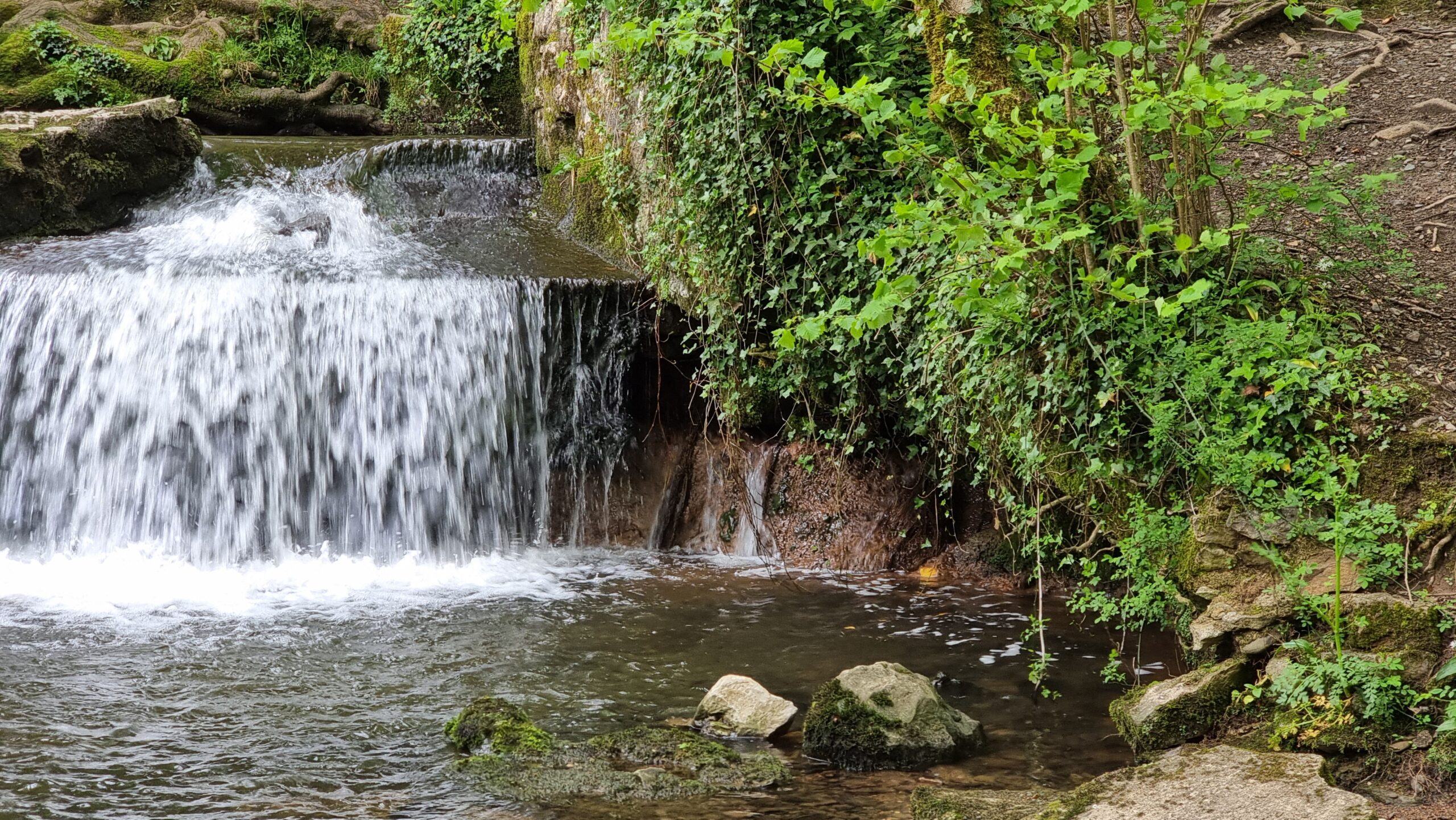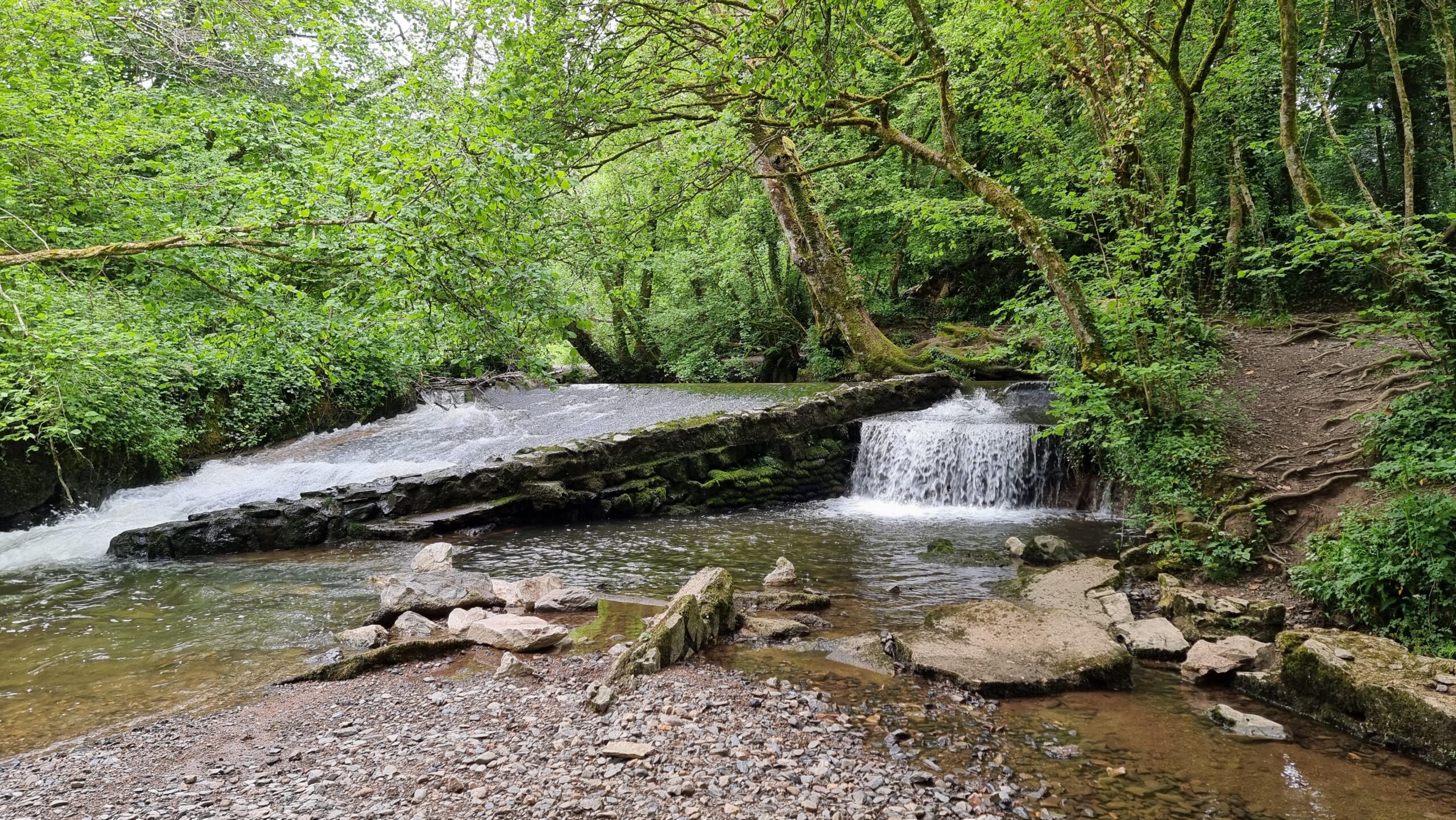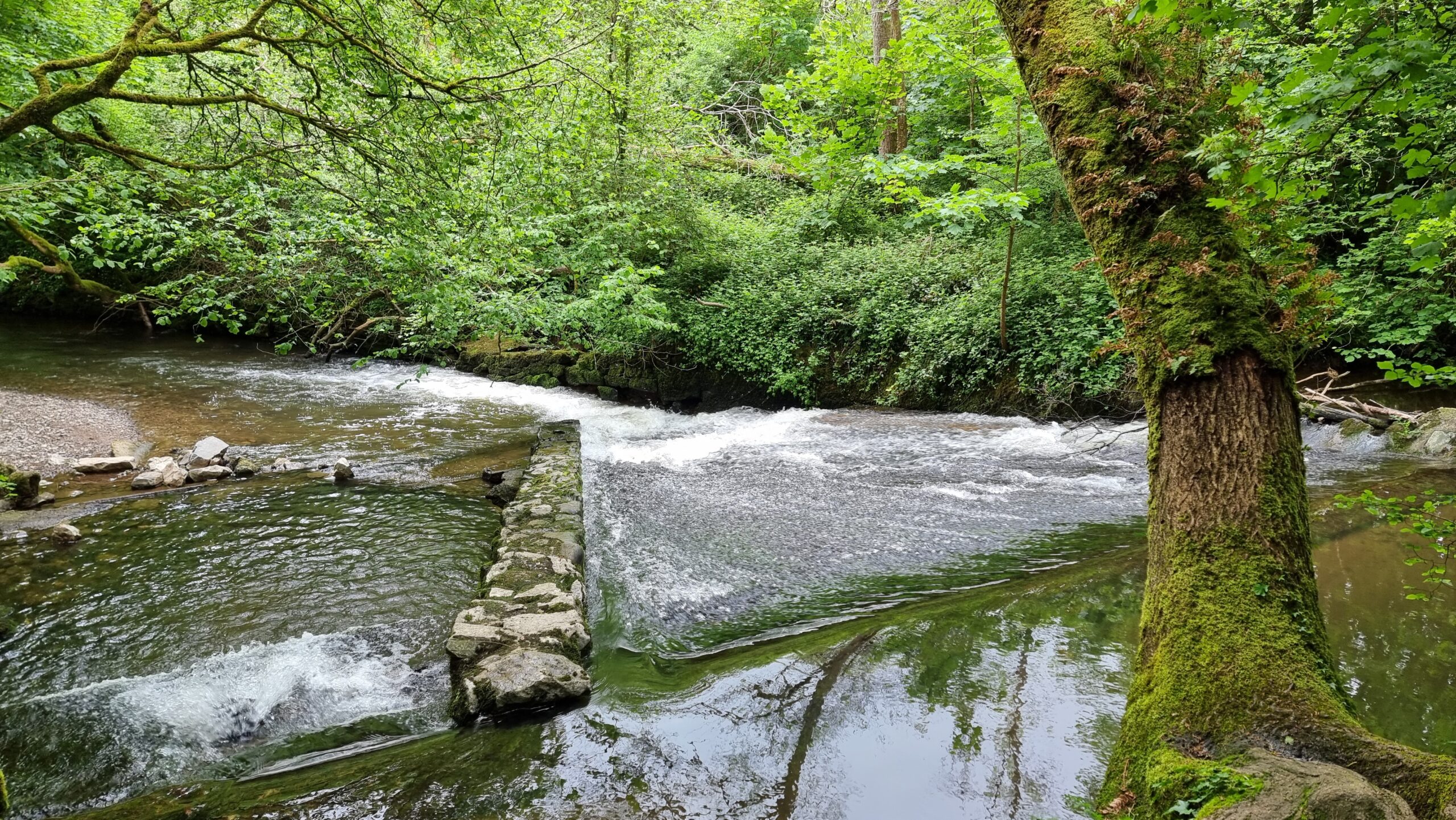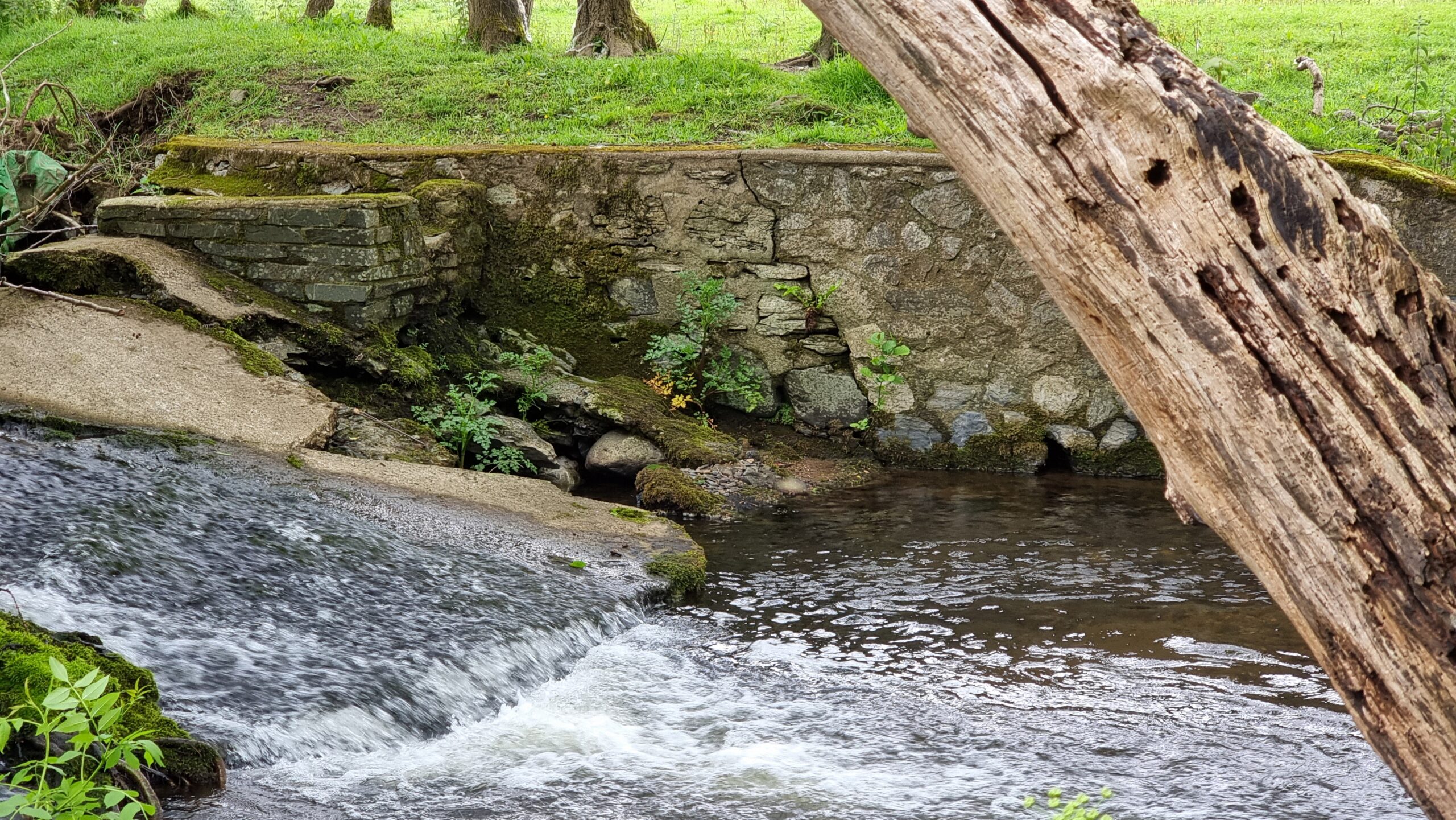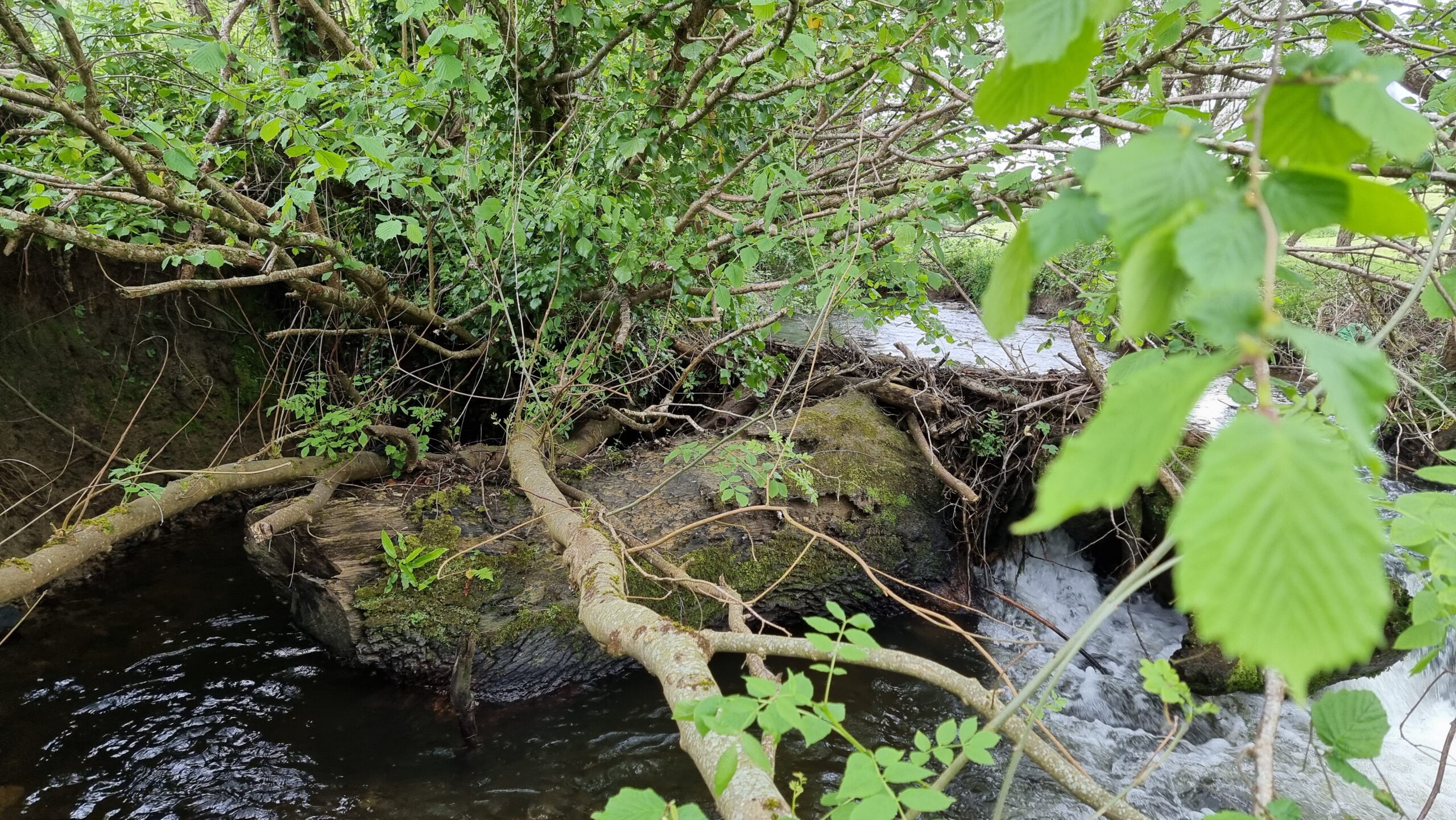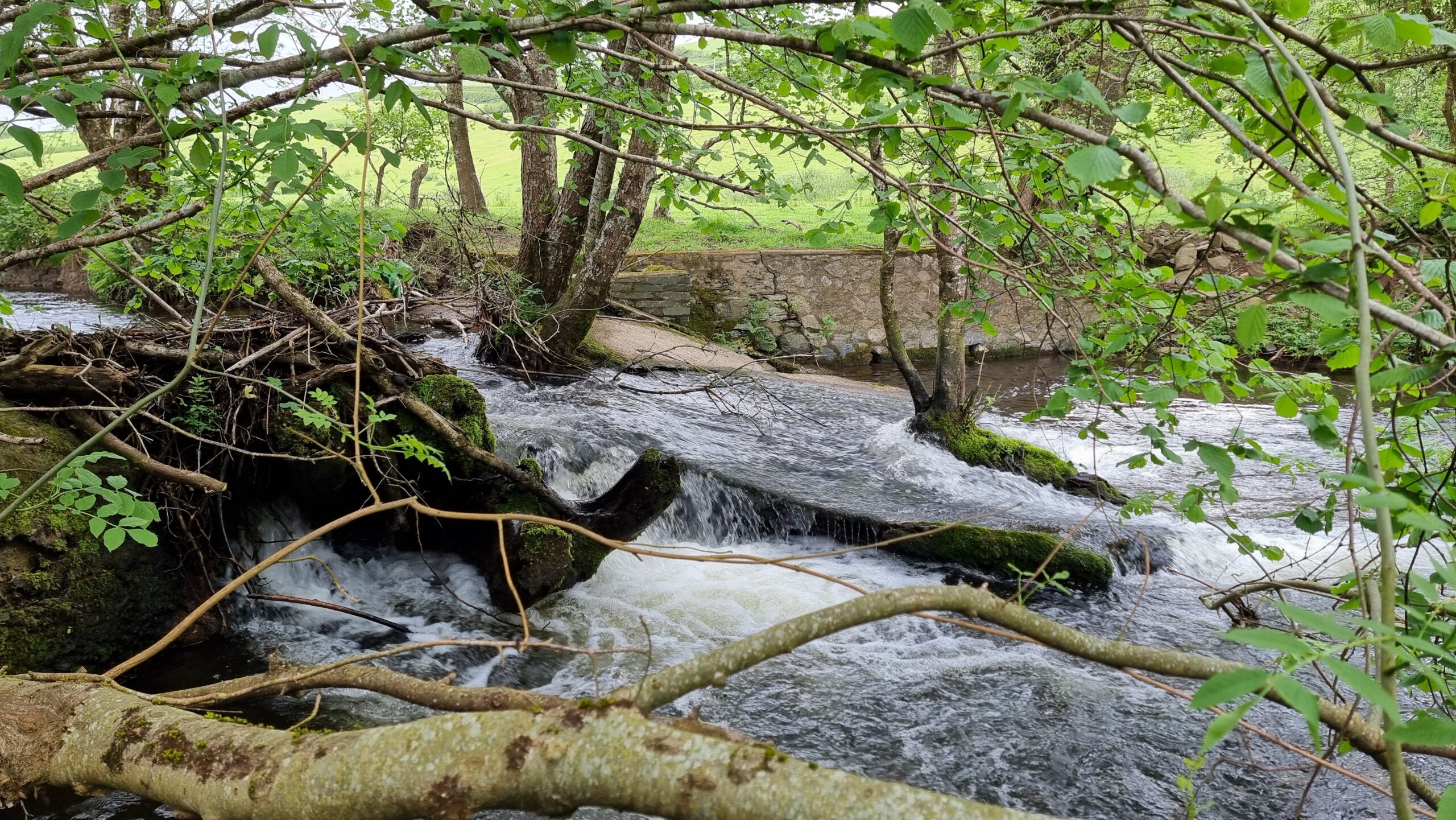The River Lemon Partnership Project to Improve Passage (Lemon PPIP) is a collaboration between the Environment Agency (EA), Westcountry Rivers Trust and the National Trust.
By addressing two sizeable barriers to fish migration at Bradley Weir and Chipley Mill Weir the aim is to deliver environmental benefits through improving fish passage and natural function of the river, which is a tributary to the River Teign catchment.
Activity will build upon works undertaken more widely along the River Lemon and will consider habitat improvements alongside options to allow fish (particularly salmonids) to migrate to their spawning grounds in the headwaters of the river.
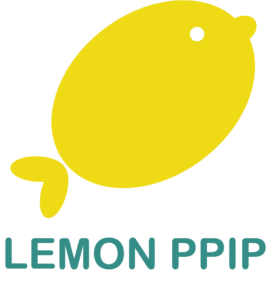
The project will assess options to to improve fish passage past the existing barriers and to deliver the outcomes once suitable options have been chosen (including post-delivery monitoring). Raising public and community awareness of the environmental goals of the project is a part of our activity, which will help the partnership to promote fisheries conservation and river ecosystem management.
We aim to recruit further Westcountry CSI citizen scientists within the catchment to carry out water quality and Riverfly monitoring to support the project.
Current Water Framework Directive catchment status
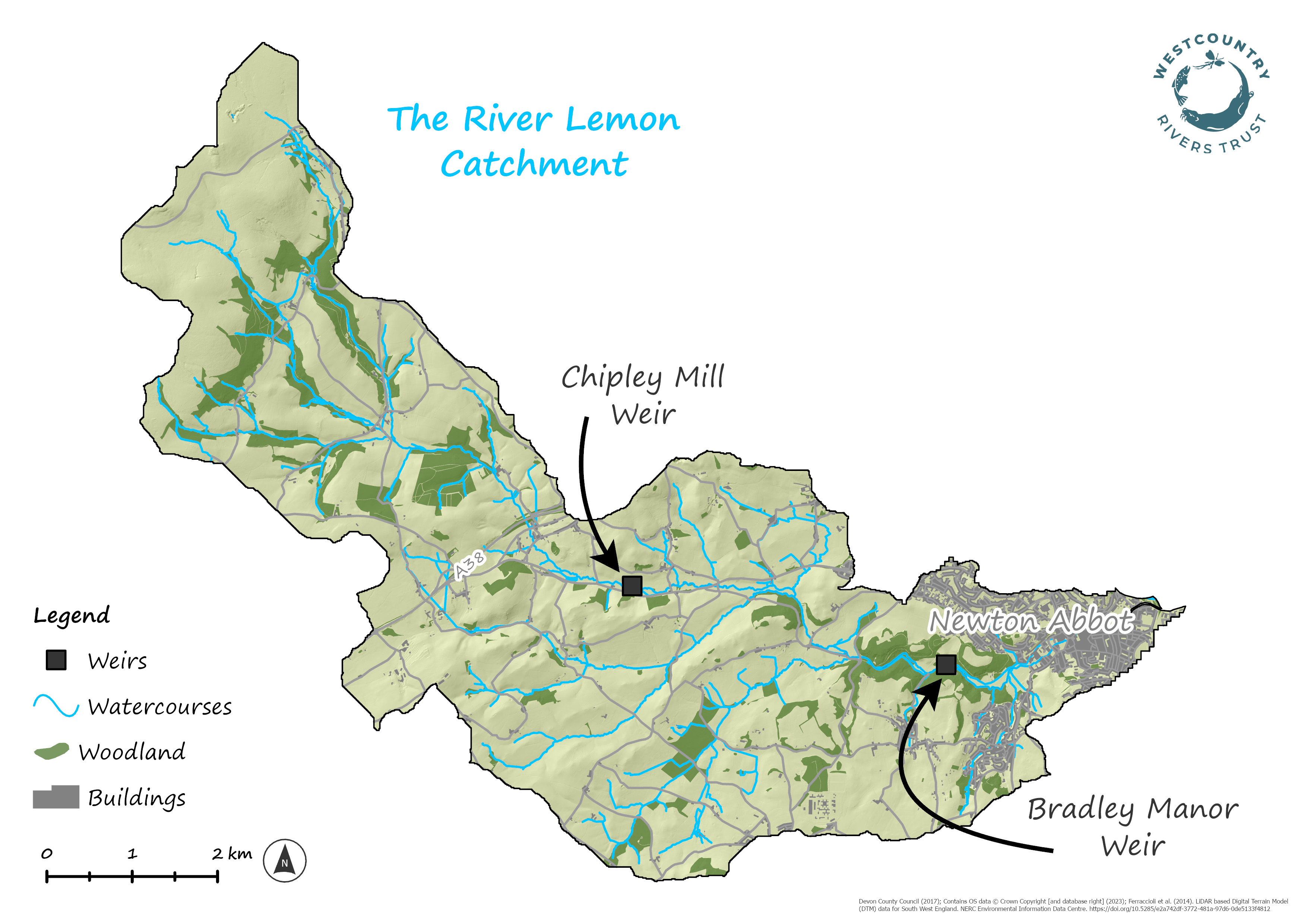
The River Lemon catchment is Moderate under the Water Framework Directive (WFD) Ecological Status.
However, the Fish element is assessed as Poor. WFD Fish status has dropped drastically from High in 2014 to Moderate (2015 to 2019 and now Poor in 2022).
There are multiple Reasons for Not Achieving Good (RNAG) lines for failing fish, including barriers to migration, forestry, agriculture, urbanisation and historic mining.
This project specifically addresses RNAG barriers to migration. The RNAG can be seen on the EA Catchment Explorer by clicking the button below.
The work complements but is distinct from other projects in the area, including a previous fish easement installed below the A38 at Bickington.
The Bickington work addressed an upstream barrier to fish passage – baffles and eel tiles were fitted to a National Highways asset situated underneath the A38 highway.
Oak baffles were fitted within the long culvert and a pre-barrage was installed below the stilling basin below the weir. This represented the most upstream known barrier to fish and eel migration on the Lemon catchment.
This work was necessary as a precursor to this project to enable us to open up the full length of the river for fish migration.
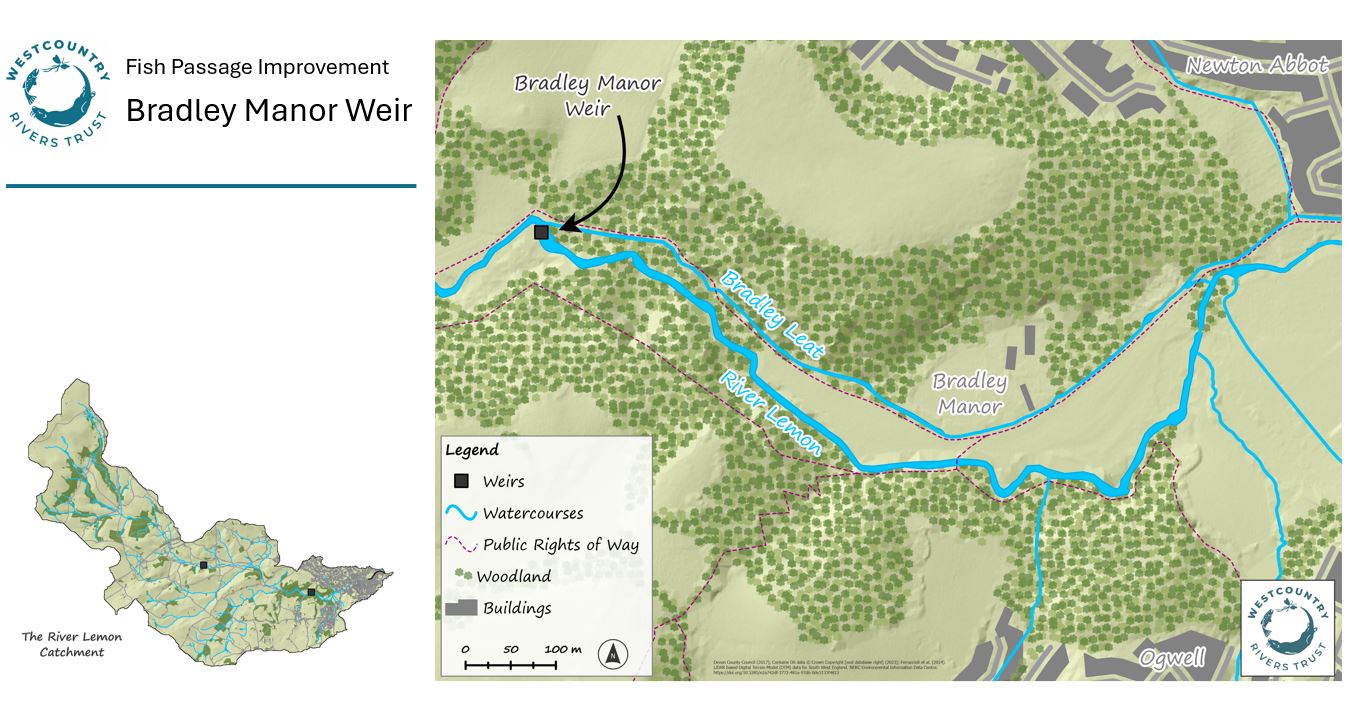
The work will be contributing to a strategic approach, tackling multiple and cumulative obstacles to fish migration alongside the River Lemon improvement project downstream.
Following fish passage work at Bickington, Chipley and Bradley Weirs are the last two obstacles to fish passage in the River Lemon, addressing these will contribute to WFD failing water bodies upstream for fish.
Improvements in migration and a free-flowing river at this location will improve access to the Dartmoor National Park and good upstream spawning habitat for salmonids, as well as improve downstream migration of fish and natural bedload conveyance.
The improvements will enhance 22.5km of upstream access for fish passage. The project will progress current optioneering into design and construction phases.
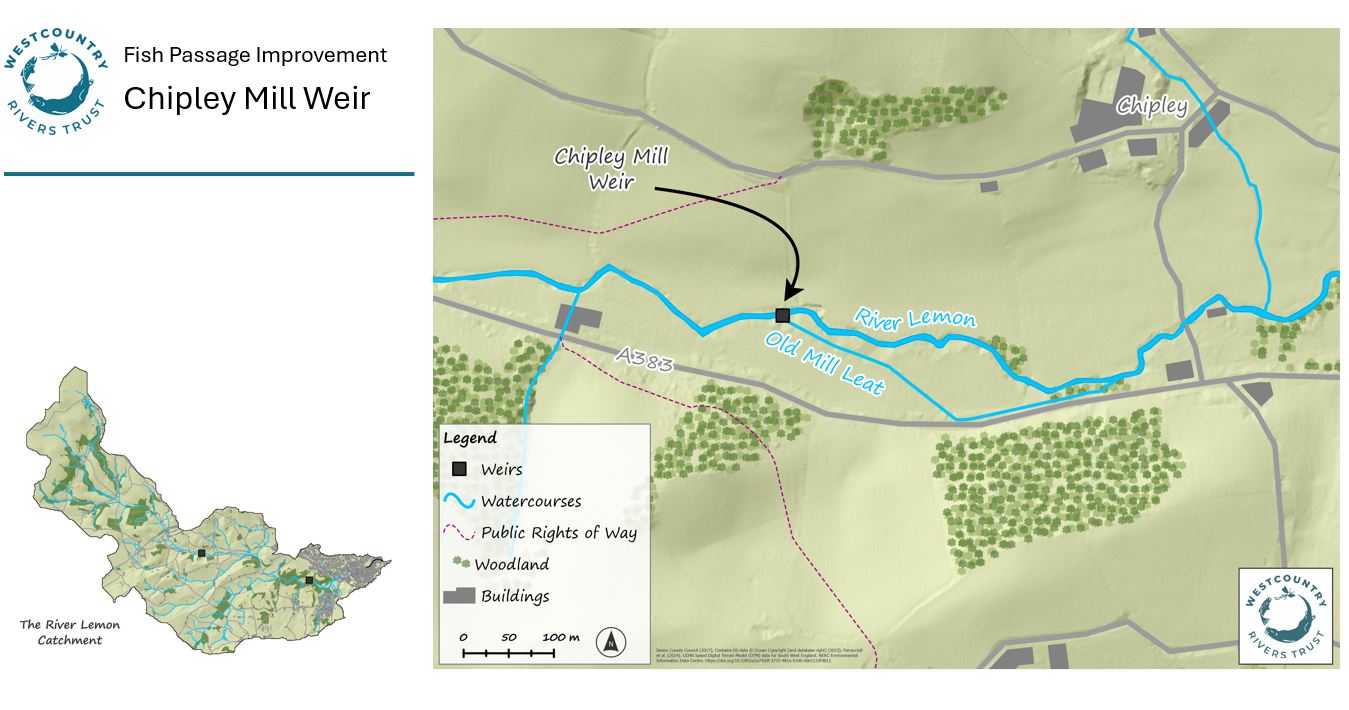
By delivering this work, it supports multiple environmental goals for fisheries, biodiversity, and protected areas.
The project will focus delivery on the DEFRA Salmon 5 Point Approach (S5PA), directly delivering point 3: to improve barriers to migration and enhance habitat.
In addition, by supporting projects and partners in the Teign catchment, it will contribute towards enhancing river habitat and delivering point 5: maximising spawning success by improving the quality of the water environment.
The project and wider catchment partnership will focus on WFD fish elements in conjunction with the S5PA. By doing so, we will make the most of intergrated catchment management to realise further ecosystem service benefits.
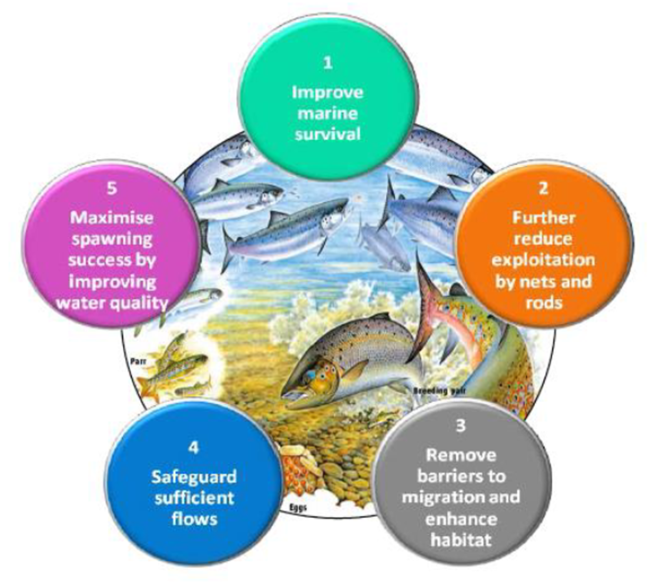
DEFRA’s Salmon 5 Point Approach
Location Images
Contact the Lemon PPiP Project Team
Become a River Lemon Citizen Scientist
Working in partnership for the River Lemon.
Funding
In additon to funding (monetary and in-kind) from the EA, NT, Open Rivers Programme, and ourselves, the Flood Grant in Aid generated from the nearby Holbeam Dam flood alleviation works is supporting this project. However, this is a distinct and separate scheme.
